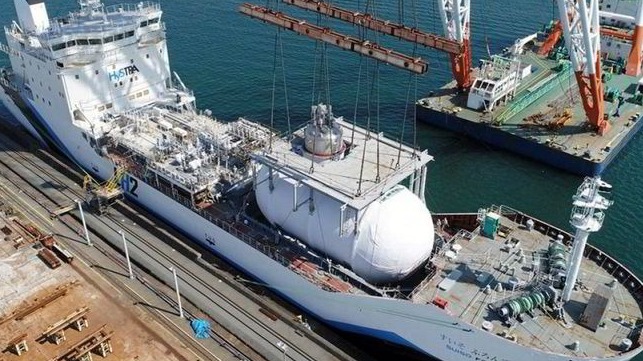“Game Changer” Catalyst for Green Hydrogen Production
September 24, 2021 Maritime Safety News

The world could commence large scale production of green hydrogen sooner than expected after researchers in Australia discovered what they described as a “gamechanger” catalyst in hydrogen production.
Researchers at Curtin University said they have identified a new, cheaper and more efficient electrocatalyst that can facilitate the making of green hydrogen from water. If confirmed, this breakthrough could open new avenues for large-scale production of the clean energy.
Green hydrogen is being touted as the fuel of the future for the maritime industry, which faces intense pressure to decarbonize in the coming decades. The industry accounts for approximately one-quarter of all emissions from the global transportation sector, emitting nearly one billion tons of CO2 annually.
According to Curtin researchers, scientists have typically been using precious metal catalysts such as platinum to accelerate the reaction to break water into hydrogen and oxygen.
However, they have found out that adding nickel and cobalt to cheaper, previously ineffective catalysts enhances their performance, which lowers the energy required to split the water and increases the yield of hydrogen.
“Our research essentially saw us take two-dimensional iron-sulfur nanocrystals, which don’t usually work as catalysts for the electricity-driven reaction that gets hydrogen from water, and add small amounts of nickel and cobalt ions. When we did this it completely transformed the poor-performing iron-sulfur into a viable and efficient catalyst,” said Dr Guohua Jia, lead researcher from Curtin’s School of Molecular and Life Sciences.
He added the discovery could have far-reaching implications for sustainable green fuel generation in the future. Utilizing more abundant materials wpuld be cheaper and more efficient than the current benchmark material, ruthenium oxide, which is derived from the ruthenium element.
“Our findings not only broaden the existing “palette” of possible particle combinations, but also introduce a new, efficient catalyst that may be useful in other applications. It also opens new avenues for future research in the energy sector, putting Australia at the forefront of renewable and clean energy research and applications,” he noted.
Dr Jia said the next steps would be to expand and test the team’s work on a larger scale to test its commercial viability.
Green hydrogen is one of the three available production paths for this fuel. Conventional gray hydrogen is produced from steam reformation of natural gas or syngas, and it is highly carbon-intensive. Blue hydrogen is produced in the same process, but with the addition of carbon capture, utilization and storage technology to remove most of the CO2 from the exhaust stream.
Despite the cost challenges of making green hydrogen at scale, many researchers believe that green hydrogen is the most promising clean fuel option for the global shipping industry, which has been given targets to reduce greenhouse gas emissions by 50 percent by 2050.
SOURCE READ THE FULL ARTICLE
https://www.maritime-executive.com/article/game-changer-catalyst-for-green-hydrogen-production





